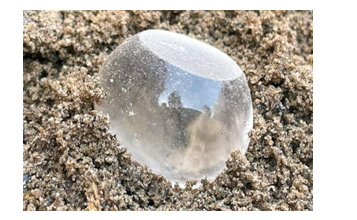

10th August 2023 (6 Topics)
Context
Archaeologists working at Keeladi, a historic excavation site located near Madurai in Tamil Nadu, have unearthed a crystal quartz weighing unit from the Sangam era.
About
Highlights of the finding:
- The quartz weighing unit, found 175 cm beneath the ground, is the first of its kind since excavations began in Keeladi in 2014.
- The quartz unit is probably from a period between 600 BC to 2nd century AD.
- The unit measures 2 cm in diameter, 1.5 cm in height and weighs a mere 8 grams.
- The researchers claim that they were used for weighing purposes.
- These weighting units were not used for paddy or vegetables but for weighing high-value items such as gold, precious and semi-precious stones.
- Crystals or mineral materials are used as weighing units because they give accurate results and do not depend on the climate.
- Archaeologists also found terracotta hopscotch, an iron nail, black and red ware, and red slipped ware.
- Archaeologists also found an earthen snake figurine.
About the site:
- Keeladi is a small hamlet in south Tamil Nadu, about 12 km southeast of the temple city of Madurai.
- It is located along the Vaigai River.
- In the eight rounds of excavations, including the first three by the ASI, over 18,000 artefacts have been unearthed from the site and the unique artefacts will be on display at the museum to be opened soon.
- Unearthing of heaps of pottery suggest the existence of a pottery making industry, mostly made of locally available raw materials.
- Over 120 potsherds containing Tamil Brahmi inscriptions have been found.
- Over a thousand inscribed potsherds, found at Keeladi and other sites clearly suggest the long survival of the script.
- Other major findings till now:
- Gold ornaments, copper articles, semi-precious stones, shell bangles, ivory bangles and ivory combs reflect the artistic, culturally rich and prosperous lifestyle of the Keeladi people.
- Agate and carnelian beads suggest import through commercial networks while terracotta and ivory dice, gamesmen and evidence of hopscotch have been unearthed revealing their pastime hobbies.
Significance of site excavations:
- The excavations here from 2015 prove that an urban civilization existed in Tamil Nadu in the Sangam age on the banks of the Vaigai River.
- Ongoing archaeological excavations in Keeladi and a few other sites in Tamil Nadu have extended the timeline of the Sangam Era from 300 BCE to 600 BCE.
- Potential Linkages with Indus Valley:The unearthed Keeladi artefacts have led academics to describe the site as part of the Vaigai Valley Civilization.
- The findings have also invited comparisons with the Indus Valley Civilization while acknowledging the cultural gap of 1,000 years between the two places.
- The gap is filled with Iron Age material in south India, which serves as residual links.
|
The Sangam Age:
|




